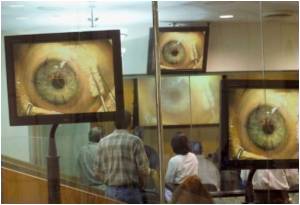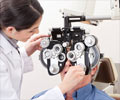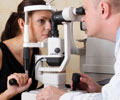People suffering from diabetes have an increased risk of blindness, yet most patients do not get an annual eye exam to detect possible problems.

Each of the two programs (known as EyeCheck and Challenge 2009) are based on technology developed at the UI and performed equally well, achieving the maximum accuracy theoretically expected.
The systems require a trained technician to use a digital camera to take pictures of the retina, located inside the eye.
The images are then transferred electronically to computers, which can automatically detect the small hemorrhages (internal bleeding) and signs of fluid that are hallmarks of diabetes damage.
"It is an important question: whether a computer can substitute for a human to detect the initial signs of diabetic eye disease," said Michael Abramoff, associate professor of ophthalmology and visual sciences at the UI Roy J. and Lucille A. Carver College of Medicine and an ophthalmologist with UI Hospitals and Clinics.
"Our analysis shows that the computerized programs appear to be as accurate and thorough as a highly trained expert in determining if these initial signs of an eye problem are developing in someone with diabetes. Once the initial problems are found, an eye specialist can treat the patient," added Abramoff.
Advertisement
Source-ANI
THK














